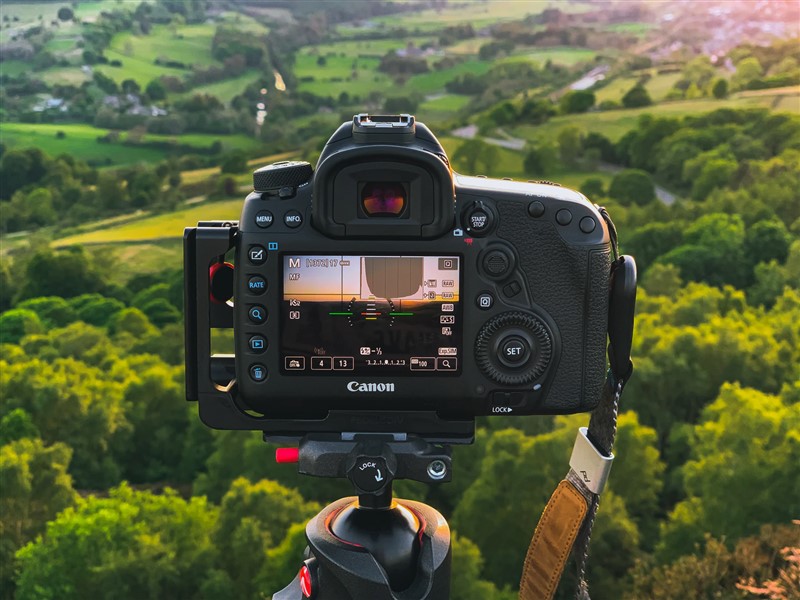Do you know the definition of DSLR? This article will provide you with all of the information you need on the abbreviation DSLR, including its definition, usage, and more!
-
Kevin
-
 August 5, 2021
August 5, 2021
-
 Common Questions
Common Questions
 August 5, 2021
August 5, 2021
 Common Questions
Common Questions
Do you know the definition of DSLR? This article will provide you with all of the information you need on the abbreviation DSLR, including its definition, usage, and more!
According to Adobe, Expert Photography, and Digital Trends, the term DSLr stands for digital single-lens reflex. A DSLR camera, or digital single-lens reflex camera, is a type of camera that can, like many digital cameras, autofocus and hold thousands of photos on their internal memory card. A DSLR camera works in a particular way. When light enters the camera lens, the photographer can see the subject in the optical viewfinder. This happens via a reflection of that light from a mirror inside the camera body. That mirror swings out of the way then the photo is taken so light can penetrate the digital image sensor. This is where the photo is captured on an SD card. On other digital cameras that are mirrorless cameras, the light goes directly to the image sensor. The photographer can only see what they’re shooting via a rear LCD screen or an electronic viewfinder.
These DSLR cameras have large sensors that can capture far more megapixels than a smartphone camera. There are two primary types of sensors: full-frame and APS-C. Full frame camera sensors match the size of 35mm film and are considered standard. APS-C sensors are smaller and give a lower focal length called “crop factor.” This can be compensated for with specific lens attachments.

DSLRs also allow photographers to change out interchangeable lenses, from a zoom lens to a macro lens to a fisheye. This makes DSLR cameras more versatile than a standard digital camera. DSLR cameras also give edges in low light, with autofocus, and on battery life. Since the screen is not required to be on all the time, they use very little power, extending battery life. They also have better autofocus features compared to point-and-shoot cameras. This allows a photographer to focus and shoot faster to capture more high-quality images. Finally with the large sensor, DSLRs can capture more light and are very effective for shooting in dim lighting.
The DSLR is based on the SLR camera, or single-lens reflex camera. These both have a reflex mirror that allows live optical viewing through the lens taking the image, but according to Diffen, the DSLR also has a digital viewing option. DSLRs require memory cards while SLRs take camera film. DSLRs can story throughands of images and have a shutter speed of 1 – 1/4000 s while an SLR only shoots 36 images per roll and has a shutter speed of 1-1/1000 s. DSLRs will usually shoot in a higher quality and have a different eyepiece for the viewfinder of a DSLR.
In a DSLR, there are two main elements: the lens and the camera body. Light enters the lens from the front. Then the light shapes within the lens and forms the shape the photographer wants. Then, it makes its way through the lens mount to the camera. After that, it enters the main mirror which reflects the light upwards toward the viewfinder. A pentamirror or pentaprism directs it into the viewfinder to allow the photographer to see what the lens sees. When the autofocus mode is on, a small portion of the incoming light actually passes through the main mirror and hits a secondary mirror that positions it to the autofocusing sensor. None of the light hits the imaging sensor. When the photographer presses the shutter button, the mirrors flip up which enables light to hit the sensor. There is a blackout in the viewfinder and the shutter mechanism, right in front of the sensor, opens up. It exposes the image and then closes after the set amount of time determined by the shutter speed.
According to Digital Photography School, the below list of cameras are the most popular DSLR options. You can see that all of these are Canons and Nikons. These are the two most popular DSLR brands today. They create many options from affordable beginner cameras to high-end professional grade cameras.
According to The Free Dictionary, DSLR can stand for more than just digital single-lens reflex. It has a few more possible definitions. However, these are definitely less common than using DSLR to describe a type of camera. If you do decide to use one of these alternate definitions, make sure that you provide the reader or listener with the proper context and information so that they can decipher your intended meaning.
Overall, the acronym DSLR stands for digital single-lens reflex, a type of camera. You may have seen these digital SLR cameras made by camera manufacturer Canon, Sony, Tamron and Nikon. These cameras have a high image quality, are compact and use the same mechanics as an SLR camera in a digital way. You can adjust the exposure and other settings to create the perfect shots, from landscapes to portraits and beyond.